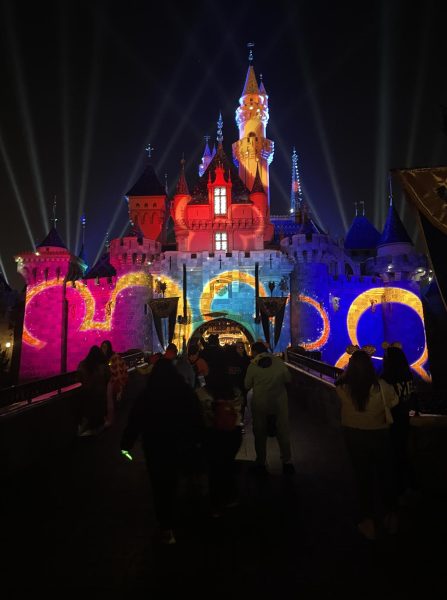‘Dia de los Muertos Cultural Festival’ at Rose Hills Memorial Park
Photo Credit: Maria Martinez
The sixth annual Dia de los Muertos Cultural festival was held at Rose Hills Memorial Park in Whittier on Nov. 1 from 11 a.m. to 4 p.m.

People walking through the event.
Friends and family were welcome to enjoy colorful displays of dancing, art, altars, and an array of foods and sweets with LA’s finest eateries; as well a marketplace with a variety of Dia de los Muertos arts and crafts.
This year the celebration was moved closer to the entrance of Rose Hills at a larger area that was more accessible from Workman Mill Road.
The origin of the celebration of Dia de los Muertos in Mexico dates back to the time of the native peoples of Mesoamerica, such as the Aztec, Maya, Purépecha, Nahua, and Totonac.
In the pre-Hispanic era, it was common to keep skulls and display them during rituals to symbolize death and rebirth.
Death was viewed as a transition between life on Earth and a new life in the hereafter surrounded by the Gods.
During the conquest of Mexico by Spain, the efforts to convert indigenous peoples to Catholicism moved the ritual and belief to coincide with Catholic holidays of All Saints Day and All Souls Day.
As the friars introduced religion, art and pictures; these became part of the indigenous rituals and were combined with ancient rites and beliefs.
The result was a joining of beliefs and tradition that became today’s celebration of the dead.
Dia de los Muertos in Mexico is a colorful and festive event that is unique to other cultures.
Flowers, gifts, fruits, candles, and music are offered to honor the memory of loved ones.
Today, people still celebrate the Monarchs as the returning spirits of their deceased relatives, mysteriously arriving the same time each year around Dia de los Muertos.

A traditional skull face designs.
The opening celebration of the festival began with groups of Ballet Folklorico and Popurri dancers.
Different groups from ages five to thirteen were dressed with detail, colorful, handmade Mexican style dresses along with their faces being half painted with different colors and designs, representing the dead.

Kids dancing to a traditional Folklorico music.
After the performances, a traditional procession entitled Tlanextil Tlacopan Aztec Fire dancers performed different dances, and a ritual that represented the dead and the ancestors of their culture with a unique alter blessing.

Tlanextil Tlacopan Aztec Fire dancer.
The event also features El Arte, a special artists circle showcasing the talents of local artists with art pieces available for sale.
Jadin de Nino’s was a children’s area that also featured workshops that included paper flowers and butterflies crafts.
During the festival, a Dia de los Muertos costume contest entitled Catrina and Catrin was held, that allowed anyone to participate as long as they were dressed as the dead.
Judges would later select two winners, male and female; with a grand prize of tickets to any theme park in California and a one night stay at a hotel.

Decorated Altars for loved ones.

Visitors walk inside the Festival.
By the end of the celebration, a cultural band known as La Chamba performed traditional Spanish music and concluded the audience to dance and celebrate the day of the dead with family and friends.
The festival was the perfect end to the weekend honoring the celebrated Mexican holiday, as well as honoring family members, friends, or any loved ones who have passed away.








